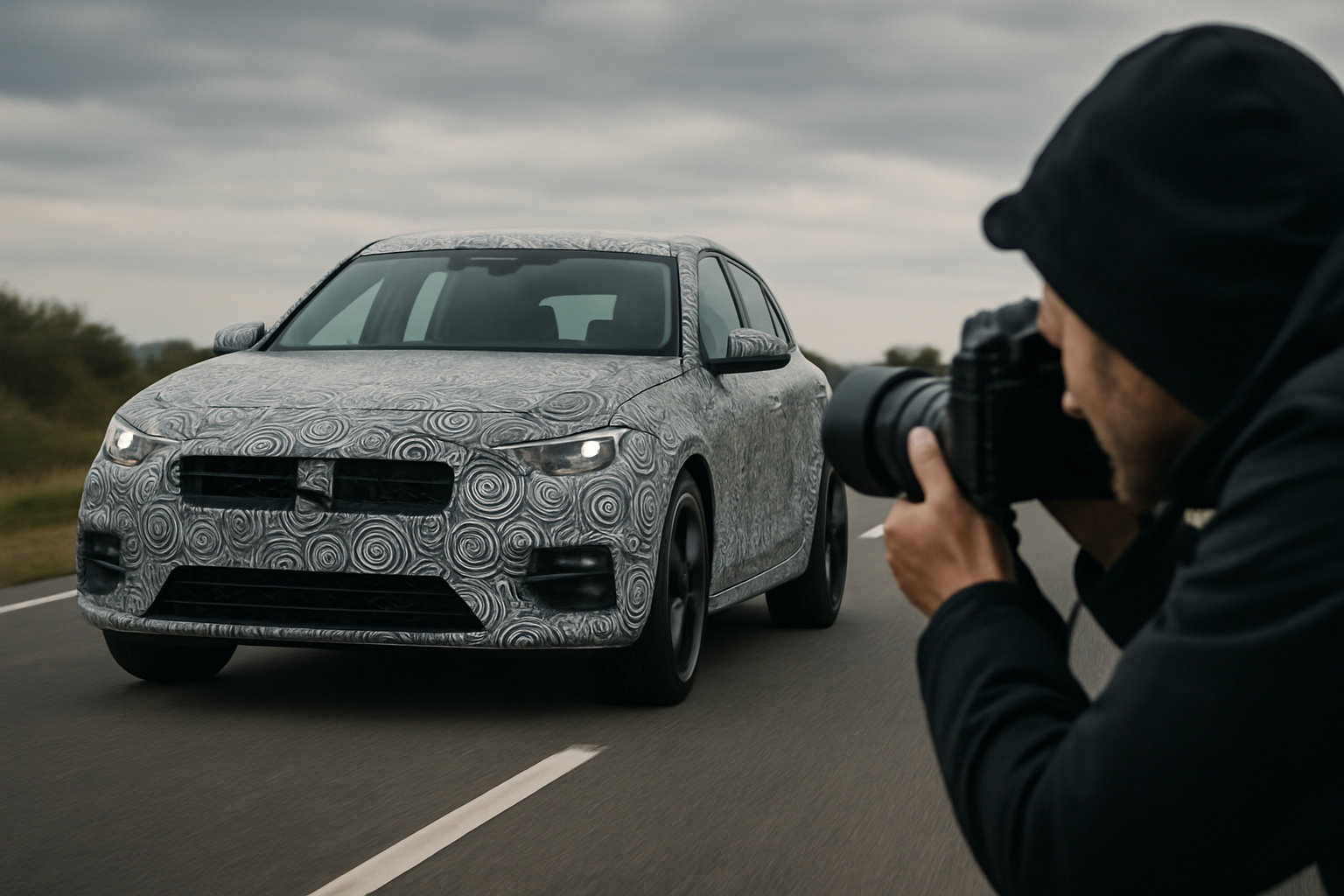The Hidden World of Automotive Camouflage
In the secretive realm of automotive development, a peculiar art form has emerged – vehicle camouflage. Far from the military-inspired patterns adorning off-road vehicles, this camouflage serves a crucial purpose in the highly competitive world of car manufacturing. It's a cat-and-mouse game between automakers and spy photographers, where millions of dollars and years of research hang in the balance.

The Birth of Automotive Disguise
The practice of concealing prototype vehicles dates back to the mid-20th century when competition between automakers intensified. Initially, manufacturers used simple techniques like black paint or canvas covers to obscure new designs. However, as automotive journalism evolved and spy photography became more prevalent, these rudimentary methods proved insufficient.
The 1980s marked a turning point in automotive camouflage. Automakers began experimenting with more elaborate disguises, using bulky padding and false body panels to alter a vehicle’s silhouette. This approach, while effective in hiding overall shapes, was cumbersome and often affected the vehicle’s performance during crucial road tests.
The Science Behind the Swirls
Modern automotive camouflage is a marvel of visual trickery. The most common technique involves applying vinyl wraps covered in disorienting patterns. These designs aren’t random; they’re carefully crafted to confuse the human eye and camera lenses alike.
The patterns typically use high-contrast elements and repetitive shapes that break up the car’s lines and make it difficult to discern its true form. Some designs incorporate optical illusions that create false shadows or highlights, further obscuring the vehicle’s actual contours.
Advanced camouflage techniques go beyond simple patterns. Some automakers use special films that interfere with autofocus systems in cameras, making it challenging for photographers to capture clear images. Others employ retroreflective materials that bounce light back to its source, causing overexposure in flash photography.
Materials and Application: More Than Meets the Eye
The materials used in automotive camouflage have evolved significantly. Modern wraps are lightweight, durable, and designed to withstand the rigors of road testing without compromising the vehicle’s performance. They’re also engineered to be easily removable, leaving no residue on the vehicle’s paint.
Applying camouflage is an art in itself. Teams of specialists work meticulously to ensure every curve and crease is covered without revealing the underlying design. The process can take several days for a single vehicle, with different layers of camouflage applied to various parts of the car.
Some manufacturers even create false body panels or removable elements to further disguise a vehicle’s true shape. These can include temporary grilles, light clusters, or even entire rear sections that completely alter the car’s profile.
The Psychology of Perception
Automotive camouflage isn’t just about physical disguise; it’s also a psychological game. Manufacturers often deliberately leave certain parts of the vehicle exposed or less heavily camouflaged to misdirect observers. This strategic reveal can create false impressions about the car’s design direction or features.
Moreover, some companies intentionally test multiple variants of a vehicle simultaneously, each with slightly different camouflage patterns. This tactic confuses onlookers and makes it harder to piece together the true design from various sightings.
The Digital Frontier of Concealment
As the automotive world becomes increasingly digital, so too does the art of camouflage. Computer-generated imagery (CGI) and augmented reality (AR) are now being employed to create virtual camouflage layers that can be applied in post-production to images and videos.
Some manufacturers are exploring the use of active camouflage systems, inspired by military technology. These could potentially use LED panels or projectors to display dynamic patterns that adapt to different environments or viewing angles, making the vehicle even harder to photograph or analyze.
The Future of Automotive Secrecy
As technology advances, the cat-and-mouse game between automakers and spy photographers continues to evolve. New materials with chameleonic properties, advanced projection systems, and even drone-based aerial camouflage are all being explored as potential next-generation disguise techniques.
However, the rise of electric vehicles and the shift towards modular platforms present new challenges. With fewer distinctive mechanical components to hide, the focus of camouflage may shift towards concealing sensor arrays, charging ports, and other EV-specific features.
The art of automotive camouflage stands as a testament to the industry’s ingenuity and the high stakes of new vehicle development. It’s a fascinating intersection of design, technology, and psychology that plays out on public roads around the world. As long as there are new cars to be revealed, there will be new ways to keep them hidden in plain sight, ensuring that the excitement of the automotive world’s “big reveal” moments continues to captivate enthusiasts and consumers alike.





